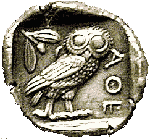|
Some of the 93 emperors co-existed on the throne and had reigns that overlapped each other .
In the Byzantine history there were 9 periods that two emperors coexisted on the throne. In 5 of these periods, empress Zoe was involved
Constantine III & Heraklonas (641)Sons of Heraklios. The are always mentioned together as if they were not individuals. Their reign was too short so neither had the opportunity to depose the other and be recorded as a singe ruler.Zoe and various others (1028-1050)Zoe was a unique case: She never ruled alone. She never ruled at all actually. Always a co-empress (with 5 other emperors) and never the acting ruler. But, none of her co-emperors would be accepted without her.
She first married Romanos III Argyros. After his death, she married, the same day, her lover Michael IV. After the death of Michael IV, she adopted his nephew who became Michael V. When this one tried to banish her, the people revolted and brought back Zoe and her sister Theodora. Last, she married Constantine IX Monomachus.Alexios IV Angelos & Isaac II Angelos (1203-1204) Alexios was Isaac’s son. They ascended to the throne with the support of the crusaders who were besieging and controlling the capital. Isaac was emperor before, in the period 1185-1195.Andronikos II Palaiologos & Michael IX Palaiologos (1295-1320)Andronikos was emperor since 1282. He never resigned, but it seems that after 1295, his son and co-emperor Michael had the leading role in the state. Michael died before his father, in 1320.Manuel II Palaiologos & John VII Palaiologos (1399-1402)John was the nephew and co-emperor of Manuel who was the senior ruler. In other similar cases, co-emperors are not listed among the rulers, but John VII was actually governing the state during the absence of Manuel II, when he made a 2-years long visit to Europe.
Remark
The majority of the Byzantine emperors had one or more co-emperors -usually but not always their sons- who were officially nominated as emperors but, as a rule, had a lesser role and no authority.
Co-emperors, normally, are not recorded as Byzantine emperors, unless, at some point, they became senior rulers themselves. The rulers mentioned above are the exception, because in these cases, the co-emperors had almost equal rights and powers.
|






